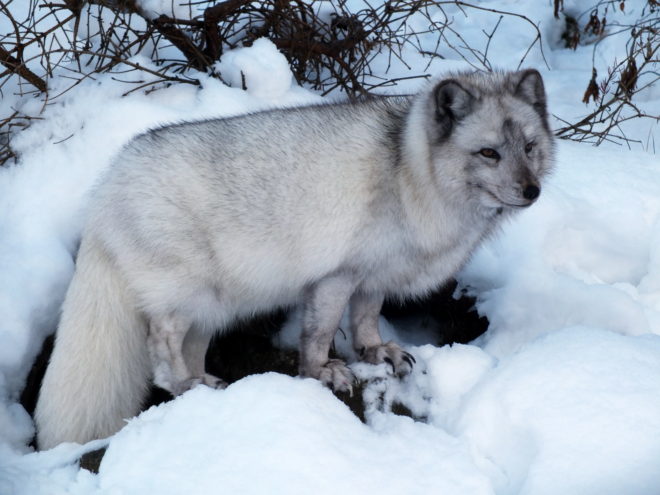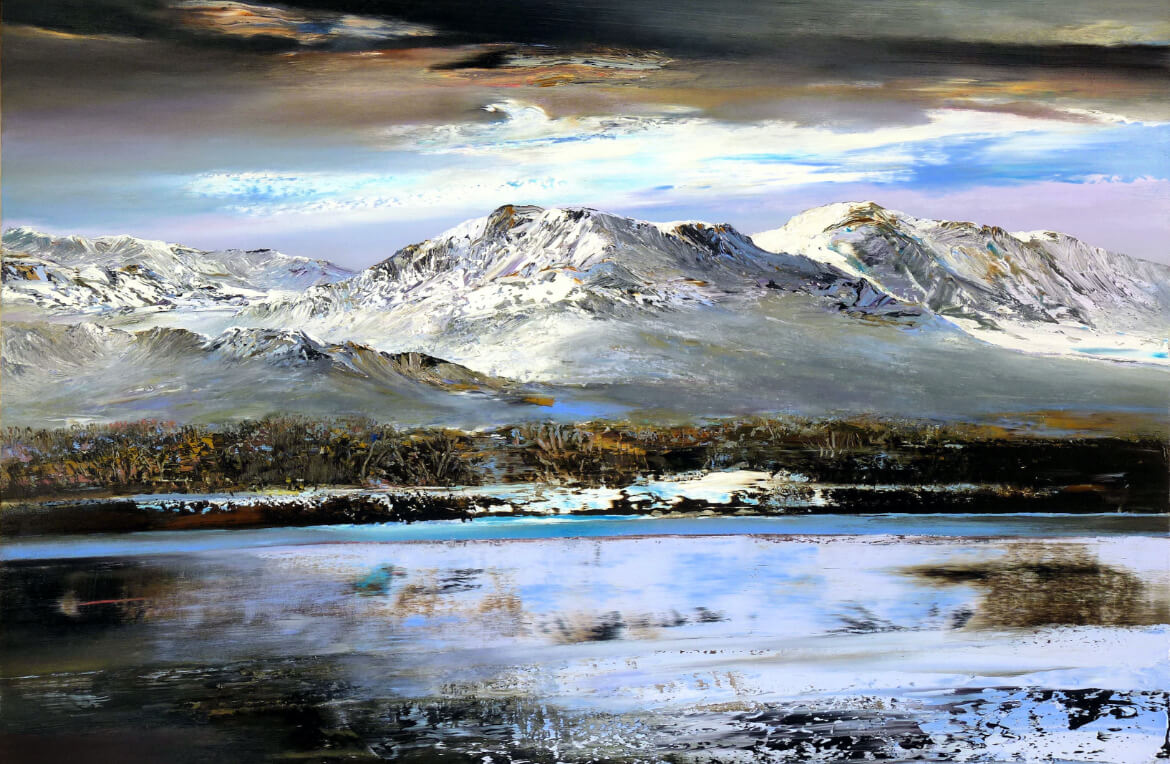
As the chill sets in, we turn to aspects of human survival – food, warmth and shelter – but how well do other mammals fare? To find out from an expert, What’s On caught up with Vickie Larkin, Head Carnivore Keeper at RZSS Highland Wildlife Park.
As her job title implies, Vickie is responsible for some very large and dangerous animals. Is that not a bit daunting? V: To many people, yes it would be, but I’ve always enjoyed working with Carnivores. Before joining RZSS Highland Wildlife Park in this role, I was Carnivore Keeper at Colchester Zoo and so have good experience. I just love it here and while it is a demanding job, it’s great fun and really rewarding.
Some creatures, more than others, are well suited to the cold and snow; the polar bear being an obvious example. And what a year it has been for the bears at the Park! V: Yes, an exciting one, and not without its challenges. In March we had the task of introducing Arktos, one of our male polar bears, to Victoria, our female. This involved training Arktos into a transportation crate and moving him to Victoria. The polar bear breeding window is very short (between 1 and 3 weeks) and, after a week of courtship and mating, we then split Arktos and Victoria and worked on training Arktos to go back into the crate. Polar bears are very intelligent you know; Arktos did his best to make that job very difficult for us! The boys are together once more and, after a period of adjustment, they’re back to being good buddies. Walker has become accustomed, finally, to sharing his food again!

And the million-dollar question – was the mating successful? V: We are keeping our fingers crossed, hoping for a positive outcome. Victoria is being monitored very closely and things are pointing in the right direction. She has started to slow down and has put on a lot of weight – some 200 kilos between April and September!
So when might we hear the patter of tiny paws? V: We would expect a birth to be in December; we will hopefully get a better idea, judging by her behaviour, next month. In the wild, the females go into their snow dens and stay there for up to 4 months. They don’t go out to feed which is why they build up their reserves during pregnancy. Polar bears normally have twins, although sometimes one or three cubs are born.
Aside from those that are pregnant, polar bears must fuel up with more food in the winter months? V: Actually, rather the opposite, they eat a lot in winter to fuel up for the summer. In the wild, polar bears feed almost exclusively off of seals which they ambush on the ice. When the ice melts in the summer, the bears cannot catch seals and that is when they usually fast. In an environment like ours where food is always readily available, one sees the same type of feeding pattern, just not so extreme.
And what is their diet – apart from meat? V: Top favourite with the boys is fat (donated by local butchers). In the wild, this would be had from seals. We supplement with cod liver oil and of course they eat meat of all kinds. We try to reflect what they would find naturally in the wild too, things like grass, roots and berries. They enjoy a carrot or two and a real summer treat is a frozen melon.
Like us, do they don a warmer winter coat? V: Yes, they develop thick coats to keep them cosy. In springtime, the shaggy fur will be scratched out and exchanged for a lighter summer covering.

And many other animals will do the same? V: Yes. Another big attraction at RZSS Highland Wildlife Park is our gorgeous snow leopards whose native home is Central Asia. Their natural defence against the harsh climate of high mountain terrain is an extremely dense coat, the growth of which is stimulated by shorter daylight hours. In fact, the snow leopard has the thickest fur of any of the large cats. And of course, some animals change their coat colour too for added camouflage. The Arctic fox is pure white in winter. Our two Arctic foxes started changing colour in early October; again sparked off by dwindling light. After a Spring moult their coats will revert to black. It’s quite dramatic really.

So, with the arrival of the first frosts and long nights, we can be assured that the polar bears, fellow carnivores, indeed all the Park’s native and endangered species, will be well looked after through the winter, thanks to the knowledge, dedication and hard work of Vickie and the whole team at RZSS Highland Wildlife Park.
Highland Wildlife Park: 240 animals in 85 hectares of park
Winter opening times: 10am – 4pm daily (except Christmas Day)
Join our Mailing List
Sign up to get notified of the latest deals, news and all the latest information direct to your inbox.
